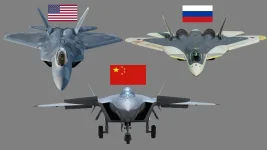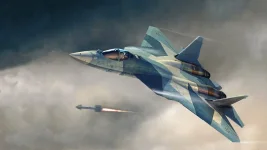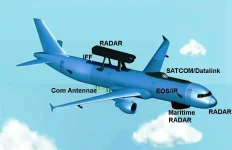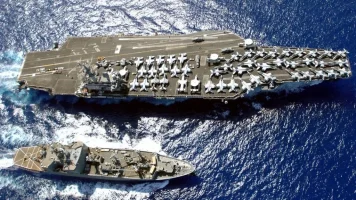- Views: 1K
- Replies: 7
The unveiling of the J-15D electronic warfare (EW) fighter jet at the Zhuhai Airshow 2024 has sent ripples through the defence community, highlighting China's growing emphasis on electronic dominance in modern warfare.
Developed from the J-15 carrier-based fighter, the J-15D signifies a significant leap in the People's Liberation Army Navy's (PLAN) EW capabilities, potentially prompting India to accelerate its own stalled EW programs.
The J-15D, developed by Shenyang Aircraft Corporation, is designed to provide critical EW support, including jamming enemy radars and disrupting communications, thereby enhancing the survivability and effectiveness of strike missions.
Its debut comes close on the heels of the J-15T multirole fighter, showcasing China's rapid progress in naval aviation technology. This advancement puts the PLAN's EW capabilities closer to those of the U.S. Navy's EA-18G Growler, a dedicated electronic attack aircraft.
In contrast, India's pursuit of a similar platform, dubbed the "Desi Growler," has faced significant delays. While the Indian Air Force (IAF) has long recognized the need for a dedicated EW aircraft, particularly to counter advanced air defenses, progress on developing an EW variant of the Su-30MKI has been slow.
Discussions between the Defence Research and Development Organisation (DRDO), Hindustan Aeronautics Limited (HAL), and the IAF have yet to translate into concrete action, hampered by a lack of consensus and funding prioritization.
Experts believe that an EW-capable Su-30MKI could significantly bolster the IAF's offensive capabilities. Equipped with advanced EW systems, the aircraft could effectively neutralize enemy radar and communication networks, providing crucial support to strike formations in contested airspace. Furthermore, developing an indigenous EW platform would reduce India's reliance on foreign systems and contribute to its strategic autonomy.
The J-15D's debut serves as a stark reminder of the widening gap in EW capabilities between the PLAN and the IAF. Without a dedicated EW escort platform, the effectiveness of Indian strike packages in high-threat environments remains limited. As electronic warfare becomes increasingly crucial in modern air combat, the need for India to expedite its EW modernization efforts has become more urgent.
The development of the "Desi Growler" holds the potential to bridge this capability gap and ensure India maintains a credible airpower advantage in the region. However, this will require a concerted effort from policymakers, defence scientists, and the aviation industry to overcome bureaucratic hurdles and prioritize resource allocation. The J-15D's appearance at Zhuhai should serve as a wake-up call for India to accelerate its pursuit of indigenous EW capabilities and maintain its edge in the evolving landscape of modern air warfare.





